July 31, 2018, Update:
Did Ninth Circuit Judge Jay S. Bybee hammer the nail into the coffin of the California Resale Royalties Act (CRRA)?
On July 6, 2018, a three member panel of Ninth Circuit Judges, Danny J. Boggs, Jay S. Bybee, and Paul J. Watford, decided the case Chuck Close v. Sotheby’s Inc. (2018 DJDAR 6669). Judge Jay S. Bybee wrote the opinion for the court. Judge Bybee was appointed to the Ninth Circuit by President George W. Bush. He gained some notoriety from his role as the Assistant Attorney General for the Office of Legal Counsel, United States Department of Justice, when the media reported on his signed August 2002, “Torture Memo.”
Below are excerpts from Judge Jay S. Bybee’s opinion.
As originally enacted, the CRRA applied to sales of fine art in California or by a California seller (whether inside California or not). Id. But, as discussed in greater detail below, we have since limited the statute to regulate only sales in California. Sam Francis Found. v. Christie’s, Inc., 784 F.3d 1320, 1322 (9th Cir. 2015) (en banc).
In short, the CRRA falls within the subject matter of the Copyright Act and asserts rights equivalent to those found in § 106(3) of the Copyright Act. The CRRA is therefore expressly preempted by § 301(a). Plaintiffs’ CRRA claims arising after the effective date of the 1976 Act—January 1, 1978—are barred.
Unlike the 1976 Act, the 1909 Act contained no express preemption provision. Our holding on express preemption therefore does not account for plaintiffs’ claims, if any actually exist, that arose between the CRRA’s effective date of January 1, 1977, and the 1976 Act’s effective date of January 1, 1978. This remaining sliver of claims is preempted only if it conflicts with the 1909 Act. Our decision in Morseburg, which likewise addressed sales of fine art occurring in 1977, is squarely on point. Its holding that the CRRA does not conflict with the 1909 Act therefore controls our analysis of plaintiffs’ remaining claims. Morseburg, 621 F.2d at 977-78.
Defendants alternatively argue that the CRRA effects an unconstitutional taking in violation of the Fifth Amendment, as applied to the states via the Due Process Clause of the Fourteenth Amendment. See Schneider v. California Dep’t of Corr., 151 F.3d 1194, 1198 (9th Cir. 1998).
Nevertheless, we will not decide the Takings Clause argument here. Although the CRRA applies only to sales of fine art that occurred after its effective date, those sales might involve fine art the seller acquired before the CRRA’s enactment. See Cal. Civ. Code § 986(d) (“This section shall become operative on January 1, 1977, and shall apply to works of fine art created before and after its operative date.”). The application of the CRRA to sales of fine art acquired before the CRRA’s enactment suggests greater interference with “investment-backed expectations,” Lingle v. Chevron U.S.A. Inc., 544 U.S. 528, 539 (2005) (citing Penn Cent. Transp. Co. v. New York City, 438 U.S. 104, 124 (1978)), and may raise a concern under the Takings Clause. The district court’s discussion of defendants’ Takings Clause argument did not account for such sales. See Estate of Graham, 178 F. Supp. 3d at 994…
Our decision today means that the CRRA had a short effective life. California’s statute permissibly coexisted for exactly one year alongside the 1909 Act. Once the 1976 Act took effect, however, the balance of state versus federal copyright protection shifted and the CRRA was preempted by § 301(a). Thus, plaintiffs at most can only state claims for the period between the CRRA’s effective date of January 1, 1977, and the 1976 Act’s effective date of January 1, 1978. We express no opinion as to the merits of plaintiffs’ remaining claims, if any exist.
May 9, 2015, Update:
STILL SOME LIFE TO THE CALIFORNIA RESALE ROYALTIES ACT
The California Resale Royalties Act (Act) was enacted in 1976 and amended in 1982. Civil Code § 986. The law covers resale of artist fine art for $1,000 or more. Fine Art is defined as an original painting, sculpture, or drawing, or an original work of art in glass. Artist is defined as a person who is actively and principally engaged in or conducting the business of selling works of fine art for which business such person validly holds a sales tax permit. Under the Act the artist is entitled to 5% of the resale price if (1) the seller resides in California or (2) the sale takes place in California. The Act applies to artists living after January 1, 1983, and the rights continue for 20 years after the artist dies.
In May 2012, a federal district court in Los Angeles ruled that the Act was a violation of the Commerce Cause of the United States Constitution. Estate of Graham v. Sothey’s Inc., 860 F. Supp.2d 1117 (C.D. Cal. 2012). The case was appealed to the Ninth Circuit Court of Appeals. On May 5, 2015, the en banc Ninth Circuit Court decision held that the Act’s provision for all sales taking place outside of California is a violation of the Commerce Cause. However, the Ninth Circuit Court reversed the district court as to holding all the Act unconstitutional and left operative the remaining provisions of the Act for resale within the state of California. Estate of Graham v. Sothey’s Inc., 2015 DJDAR 4954. The Ninth Circuit Court did not decide the issue of whether the Act violated the federal copyright laws.
